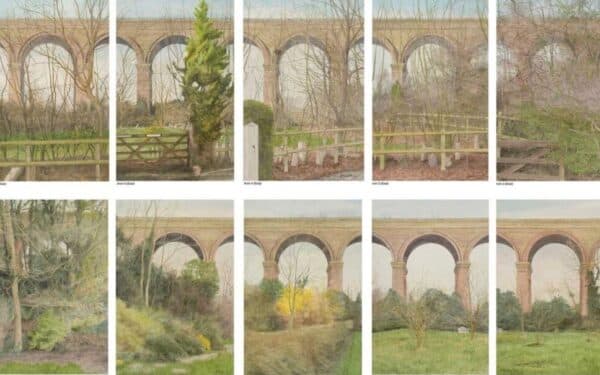In the five years since Zaha Hadid’s passing, much has been written about the glorious and towering legacy the fabled British-Iraqi architect left behind. Thinking about what she started, though, is more instructive.
Born in Baghdad, Iraq in 1950, Hadid – aka the Queen of Curve – fundamentally altered the contours of modern architecture and design. She shattered gender stereotypes too by, in 2004, becoming the first woman to receive the Pritzker prize – the highest award in her field.
As the world grapples with how to respond to the climate crisis, architecture is in the spotlight. The built environment is responsible for almost 36% of global energy consumption. Cement alone causes 8% of global emissions.
In this context, Hadid’s most valuable contribution is the inspiration she represented and the innovation she embodied. She conceived of modernity as an incomplete project, to be tackled. And she demonstrated to students not just how to imagine revolutionary forms but, crucially, how to bring them to life.
Problem solving
The seductive nature of Hadid’s buildings means that the approach she took to sustainability is often overshadowed. It also wasn’t an explicit aspect of her early works, but rather became so later on in her career, in projects including the Bee’ah Headquarters in Sharjah, and Eco-park stadium in London. In 2015 she memorably highlighted sustainability as a defining challenge of her generation and stated that “architects had solutions”.
Hadid was a problem solver. From the outset she was unique in harnessing both technology and talent, through her groundbreaking interdisciplinary research group. She was one of the early adopters of a fully digitised 3D design process. When virtual reality became a thing, her practice was one of the first to adopt that too.
This ability to make things happen was hard won. As a student at the Architectural Association in London in the mid-1970s, Hadid turned heads from the start with her otherworldly ideas. But it took her over a decade to get her designs realised. It was with her first big commission – the 1993 Vitra Fire Station in Germany – that the world finally got to see up close the power of her architectural imagination.
The Danish architect Bjarke Ingels (founder of Bjarke Ingels Group, one of the most dynamic contemporary architectural practices) described visiting Vitra Fire Station as an “eyeopening experience” that brought to life the kind of visual impossibilities people usually only dream of. For all its ambition, though, the Vitra building was criticised as unsuitable by the firemen who occupied it.
Undeterred, Hadid went on to create daring, experimental designs for London’s Millennium Dome exhibition spaces and the Serpentine Gallery’s annual summer pavillion. She gave Innsbruck a new landmark – the Bergisel Ski Jump – and became the first woman to ever design an American art museum, with her iconic Rosenthal Center for Contemporary Art in Cincinnati.
Immeasurable influence
Although her career had begun with that infamous tag of her buildings being unbuildable, Hadid rapidly established herself as a radical architect by creating a strong and unique design statement globally. Hadid expanded her global brand and her reach to product design, fashion and jewellery.
In Canadian architectural historian Despina Stratigakos’s book, Where Are the Women Architects?, Hadid explained how she survived and fought sexism in her profession. Her inspiring attitude and professional demeanour was gender-neutral. She was able to switch between femininity and masculinity as required to survive and excel in what is a ruthless and ultra-competitive business.
In this way, even though her projects saw her labelled a starchitect, Hadid’s ideas set her apart from the old school. They opened a radically new path for later generations, like this year’s Pritzker laureates, Anne Lacaton and Jean-Philippe Vassal.
Her presence continues to be felt across the contemporary design and architecture worlds. With around 1.2 million Instagram followers, Zaha Hadid Architects is now the most followed architectural practice in the world. Her sinuous lines and captivating shapes have been referenced by set designers on trendsetting movies including Black Panther.
Her words – especially the famous quote, “There are 360 degrees. Why stick to one?” – have stuck with architects in China and designers in Germany and India. Her principles have fostered new possiblities in architectural research, thinking and process.
In every way, Hadid remains a muse. She was rebellious and defiant. She embraced the unimaginable. Known for provoking controversies, even her critics agreed to the fact that without Hadid, architecture would be less interesting.
When she won the Pritzker prize in 2004, the jury noted how consistently she defied convention. Even if she’d never built anything, they said, Zaha Hadid would have radically expanded the possibilities of architecture. She was lauded as an iconoclast, a beautiful mind. As the critic Joseph Giovannini put it at the time, “Rarely has an architect so radically changed and inspired the field”.
This article was originally published in The Conversation
Lakshmi Priya Rajendran is a Senior Research Fellow in Future Cities at Anglia Ruskin University




